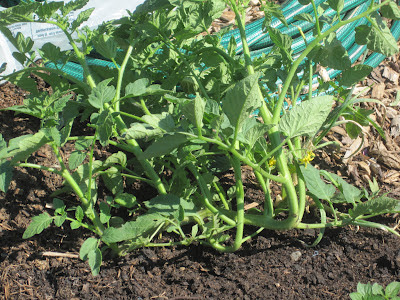Below are two recipes from my daughter, Emily, a Registered Dietitian.
Asparagus and Strawberry Spring Salad
 |
| Emily's Asparagus and Strawberry Spring Salad, May 27, 2012 |
Makes 5-8 servings
Fresh produce packs its most powerful punch when in season. This recipe combines delicious salad greens, asparagus, and strawberries, which all have overlapping periods of peak abundance and nutritional value. Nutrients in salad greens differ among varieties, but dark, colorful greens are typically rich in vitamins A and C. Both vitamins A and C support immune health and vitamin A is also known for its role in eye health. Strawberries bring sweetness to this salad as well as vitamin C and anti-inflammatory compounds. Asparagus is rich in many vitamins and minerals, including vitamins A and K, folate, and iron. Asparagus also provides fiber and inulin, which both promote the health of the digestive tract. Feta cheese and pine nuts or sunflower seeds offer a bit of protein, allowing the salad to serve as a light meal. The fat provided by the oil in the dressing increases absorption of the abundant supply of nutrients in this salad. Choosing flax seed oil for the dressing adds a plant source of anti-inflammatory omega-3 fatty acids.
6-8 cups of mixed spring greens (torn)
1 pound (about 2 cups) asparagus, roasted and cut into 1 inch pieces
1 cup fresh strawberries (sliced)
1 small onion (sliced)
1/2 cup sunflower seeds or pine nuts
1/2 cup feta cheese (crumbled)
1-2 teaspoons olive oil
Pinch of salt and pepper
1/3 cup flax seed oil or light olive oil
1/3 cup water
1 Tablespoons balsamic vinegar (more if preferred and depending upon strength of vinegar)
2 Tablespoons strawberry jelly, jam, or preserves
2 teaspoons fresh basil or mint, minced
Break woody ends off of asparagus. Place spears in medium sized skillet. Drizzle with olive oil and sprinkle with pinch of salt and pepper. Sauté approximately 5 minutes (cooking time varies according to size of spears) until spears are bright green and surface is lightly browned. Remove from heat and cut into 1 inch pieces. Allow to cool.
Place salad greens in large bowl. Top with cooled asparagus, strawberries, onions, sunflower seeds or pine nuts, and feta cheese.
Whisk together oil, water, balsamic vinegar and strawberry jelly, jam, or preserves. Add fresh basil or mint. Shake well.
Serve salad in large bowl or on individual plates and top with dressing (or other dressing of choice).
Chunky Tomato and Cucumber Salad
 |
| Emily's Chunky Tomato and Cucumber Salad |
Makes 8 servings
This chunky vegetable salad is based on the plentiful homegrown tomatoes of late summer, rich in lycopene and vitamins A and C. All of these nutrients are known to be antioxidants and, therefore, valuable components in cancer prevention. The salad is most delicious with fresh tomatoes from the garden or is easily prepared by slicing grape or cherry tomatoes in half. Cucumbers provide a familiar combination, but substituting bell peppers or lightly sautéed green beans, roasted asparagus, or summer squash allows for seasonal variations of this antioxidant-rich salad.
Tomato Salad
4 cups tomatoes
2 cups cucumber or other seasonal vegetable(s)
1 large onion
1/3 cup olive oil
1/3 cup red wine vinegar
1 Tablespoon fresh basil (chopped)
1/4 teaspoon garlic powder
1/2 teaspoon salt
Fresh ground black pepper to taste
1/4 cup fresh parsley (chopped)
Cut tomatoes into bite sized pieces. Slice cucumbers and onions and add to tomatoes. Add fresh basil and parsley. Sprinkle vegetables with garlic powder, salt, and coarsely ground black pepper.
Combine oil and vinegar. Pour over vegetables and herbs. Serve at room temperature.
The above recipes are from Emily Davis Moore, RD, LDN


















































